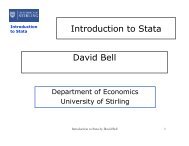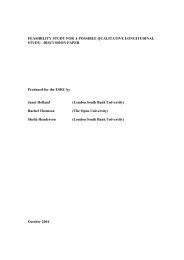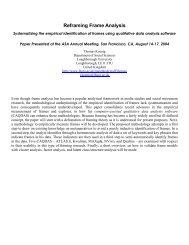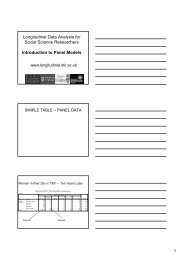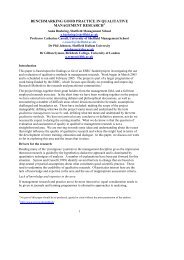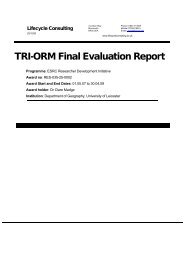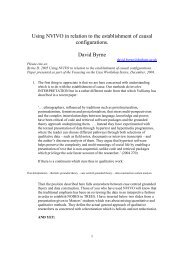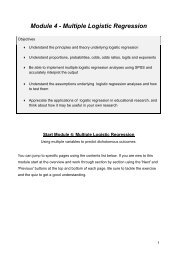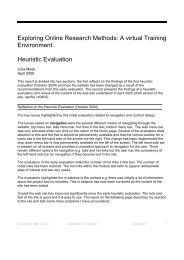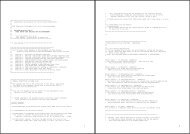You also want an ePaper? Increase the reach of your titles
YUMPU automatically turns print PDFs into web optimized ePapers that Google loves.
Thomas Koenig: Framing Anti-Semitism as Free Speech 3<br />
framing is an innate property of all social processes, not only those most consciously<br />
manufactured. This paper sticks more to the original approach and thus treats frames as<br />
"conceptual scaffolding" (Snow and Benford 1988: 213).<br />
Methodology<br />
Since framing became a popular approach in the late 1980s, an extensive and disparate<br />
laundry list of frames has emerged in the literature (Benford 1997: 414). This disparity of<br />
frames leaves one wonder, whether anything can be framed as a frame. Unfortunately, many<br />
studies leave the reader in the dark about the actual process of empirical frame detection.<br />
Even otherwise exceptionally well argued studies laconically describe the frame<br />
identification process in a footnote with "[f]rames were analyzed from the actual language of<br />
the reported claim (direct and reported speech)" (Statham and Mynott 2002: 10, Fn. 6). In<br />
some cases, at least the measurement model for frames is clarified. In these cases the reader is<br />
presented with a list of more or less parsimoniously identifiable frame terms, "attributes" or<br />
"devices," which were used as manifest indicators for the identification of frames (e.g., Ferree<br />
et al. 2002; Koella 2003; Semetko and Valkenburg 2000; Ullrich 1998; Semetko and<br />
Valkenburg 2000; Ullrich 1998). By making their entire coding scheme available online,<br />
Ferree et al. (2002) are in this respect the trailblazers for a new kind of transparency that has<br />
been made possible by the new digital technologies. 1 While increased transparency and<br />
accountability certainly render framing research more credible, they still do not solve the<br />
problem of the missing systemization of frame construction. We thus remain heavily so<br />
dependent on the creativity of individual scholars (Maher 2001: 84), that it has been alleged<br />
that frames are merely constructed through "researcher fiat" (Tankard et al. 1991: 5; Tankard<br />
2001: 98).<br />
To counter these objections, the frame identification process should be made more visible<br />
and systematic. A first step towards the latter direction is the construction of a frame<br />
taxonomy, distinguishing structural schemes ("generic frames") from frames that focus more<br />
on content (Benford 1997: 413; Rogers, Hart, and Dearing 1997).<br />
With respect to media framings, four generic frames have frequently been identified,<br />
namly<br />
1<br />
http://www.ssc.wisc.edu/abortionstudy/, last accessed: October 6, 2003.



